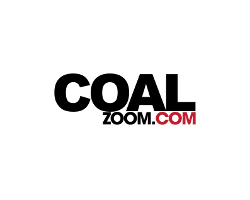Jimmy Brock Opens Bluefield Coal Show

September 11, 2019 - “Globally, coal is a growth industry with a massive installed capacity base catering to a basic human necessity – access to electricity,” said Jimmy Brock, President and CEO, CONSOL Energy in delivering his Keynote Address Coal and the Changing Energy Landscape at the Media and Exhibitor Appreciation Breakfast prior to cutting the ribbon to open the Bluefield Coal Show.
“Domestically, coal demand is impacted by abundant natural gas but that could be changing,” he said. “Natural gas will not stay cheap forever, and coal provides resiliency, which is very visible during extreme weather events. Coal continues to supply the lowest fully-loaded cost of electricity and as an industry, we will have to continue to invest in talent and new technology.”
Brock described CONSOL Energy (NYSE:CEIX) as a coal producer and exporter based in Canonsburg, PA and successfully spun off from CNX Resources Corporation E&P business in November 2017. Assets include: 90% economic ownership of the Pennsylvania Mining Complex (PAMC); 100% ownership of CONSOL Marine Terminal (CMT) in Baltimore, MD; and 1.6 billion tons of undeveloped coal reserves in Norther App., Central App., and Illinois Basin.
PAMC is the largest underground mining complex in North America consisting of Bailey, Enlow Fork, and Harvey coal mines and related infrastructure as well as 699 mm tons of reserves in Pittsburgh No 8 seam; five longwalls and 15-17 continuous mining sections; and a central preparation plant (8,200 raw tons/hour) and loadout (9,000 clean tons/hour). The 2018 production was 27.6 million tons. CMT achieved a record annual revenue of $65 mm.
Jimmy Brock said that coal is a critical industry improving the life of billions. Global coal-fired generation capacity growth continues with Asia leading the pack as economic growth and penchant for improving quality of lives drive demand for electricity. Total global capacity under construction and planned is about 411 GW. Seaborne thermal coal demand growth continues. Growth in Asian thermal coal demand will more than offset the projected decline in Western economies.
“Despite global growth, coal generation is in decline in the U.S. with global coal-fired generation increasing 78% since 2001 while U.S. coal-fired generation is declining 40% during the same period,” said Brock, who explained that U.S. share of global coal-fired electricity generation has declined from 33.4% to 11.4%. In the U.S., regulations (CSAPR, MATS, Clean Power Plan) and subsidies have restricted innovation and driven capital to the natural industry and renewables resulting in lost competitiveness for the sector.
Brock indicated that metallurgical coal demand would be driven by infrastructure growth. According to Wood Mackenzie, global seaborne met coal demand will rise from 313 Mt in 2019 to 422 Mt by 2040. Indian imports will increase to 142 Mtpa in 2040 vs 63 Mtpa in 2019 accounting for over 72% of net seaborne growth. Chinese demand will increase by 16 Mtpa to 66 Mtpa by 2040. There is a shortage of low-vol projects in the supply pipeline and known projects are limited.
“There is potential for alternative uses for coal and new product streams provide attractive opportunities for improving the value proposition at the mine,” said Brock, adding “however, it will be challenging to find a new product application that can replicate the scale of the coal industry as we know it today.” Brock listed a number of concepts and potential products: rare earth elements, critical/strategic minerals, aggregates, chemicals, agriculture applications, carbon fiber, carbon foam, composites, graphene, and carbon-based electrodes (photovoltaics, batteries).
“There is great opportunity for collaboration between industry, universities and government agencies,” said Brock. “We must engage with all stakeholders and highlight the value proposition of coal, communicating the benefits of access to low cost electricity that coal provides across the globe.” Brock outlined additional collaboration including: highlighting the benefit of significant installed capacity base that can be utilized; advocating the use of ‘green capital’ earmarked for replacing coal capacity to improve healthcare and education access around the world; protecting U.S. energy security and helping improve access to affordable electricity and quality of life in developing economies throughout the world; preserving coal as a reliable, resilient, low-cost source of domestic electricity and promoting the exports of safely and compliantly mined U.S. coal to emerging markets with low standards of safety and environmental compliance.
‘We must train the next generation of mining engineers and technical professionals as well as fund research and innovation opportunities across a wide variety of disciplines,“ Brock said. “Most importantly, we must improve coal mine safety and reduce employee exposure. We must identify and develop alternative uses for coal.”
The Breakfast concluded and those assembled walked round to the front of the Armory where the ribbon was cut under bright sunshine opening the coal show. Some 7,000 visitors are expected in Bluefield over three days and the first thousand had already begun to arrive from the parking lot at Mitchell Stadium on the shuttle buses to the Brushfork Armory - Civic Center. This is expected to be the largest gathering of coal people in the nation this year. The 23rd Biennial Bluefield Coal Show was truly underway.

